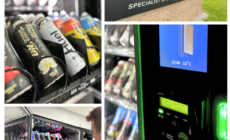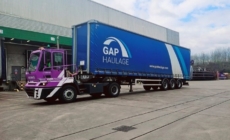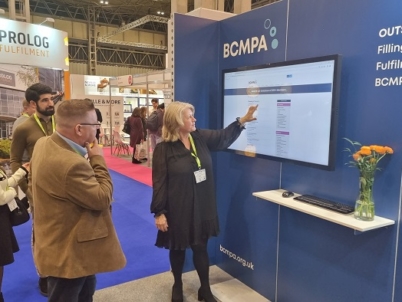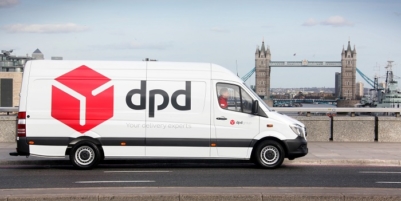-
Nutrivend selects Forterro’s Orderwise to support online expansion and streamline operations - 1 day ago
-
ARROWXL LAUNCHES AMBITIOUS ZERO WASTE ROADMAP - April 8, 2025
-
THE BCMPA’S NEW CAMPAIGN DRIVES OUTSOURCING SUCCESS IN Q1 - April 7, 2025
-
BLACKOUT TECHNOLOGIES TARGETS TELEMATICS-INTEGRATED MOBILE DEVICE BLOCKING TO COMBAT SMARTPHONE DISTRACTION - April 1, 2025
-
OpenADR Alliance announces first OpenADR 3.0 certified products with EVoke Systems, E.ON Energy and Universal Devices - March 25, 2025
-
Growing fulfilment and contract packer appoints new Managing Director - March 25, 2025
-
When is it time to invest in a WMS? Understanding the key trigger points - March 25, 2025
-
eCapital helps Vantage Recruitment on its journey to financial success - March 24, 2025
-
Hugo Beck Celebrates 70 Years of Packaging Innovation with Open House Events - March 20, 2025
-
PROLOG FULFILMENT SUPPORTS LUNA DAILY’S COMMITMENT TO BETTER BODY CARE FOR ALL WOMEN - March 19, 2025
Doing business with Europe has become so expensive and onerous since Brexit that a vast number of UK eCommerce businesses have simply turned off all EU activities. Managing the different VAT thresholds and rates across each EU country has certainly added to the admin burden and cost of doing business – so how much difference will the new Import One Stop Shop (IOSS) make? James Hyde, CEO of James and James Fulfilment explains why businesses need to take urgent steps to ensure they can still trade after July 1st.
Harmonising VAT
As the European Union pushes forward with its plan to change the way VAT is accounted for on cross-border B2C supplies, UK eCommerce businesses need to be aware of the sweeping reforms being introduced on 1 July 2021 by the 27 member states. Designed to make it easier to account for local VAT in the consumer’s country, the new rules are also targeted at cutting loop holes and reducing the substantial value of VAT fraud.
For UK eCommerce businesses that have wrestled with the need for different VAT numbers – as well as VAT thresholds and rates – in different member states, the creation of the Import One Stop Shop (IOSS) single EU VAT return is broadly welcomed. Allowing businesses shipping goods from their home country to customers across the EU to report all pan-EU sales in one place, the IOSS is an extension of the 2015 Mini One-Stop-Shop (MOSS), which successfully trialled a single EU return for B2C sales of digital, telecoms and broadcast services.
The process is relatively simple – a business simply needs to go online and register for an IOSS number. However, to do so requires an existing VAT number – and if a business does not already have that in place, it will require fiscal representation to acquire the number and currently, this process is taking up to eight weeks.

Reducing Thresholds
The other significant change is the withdrawal of the €22 import VAT exemption on small parcels – something that has been used – intentionally or mistakenly – by companies to avoid VAT in the past. From July 1st VAT must be charged at the point-of-sale for consignments not exceeding €150. Companies using the IOSS simply need to ensure VAT is calculated at the point of sale and goods will be automatically passed through customs. However, any company that has overlooked this change and continues to send lower value items into Europe will face a nasty surprise because both VAT and an admin fee will be applied, and the cost will be presented to the end customer.
For those that register in time, the use of the IOSS will create a more efficient process for quick and easy customs clearance – which should reduce delays and avoid unexpected admin fees from both customs and carriers. However, to ensure goods pass smoothly through this new ‘green channel’ UK eCommerce businesses must ensure all commercial invoices include the correct IOSS number.
Furthermore, much of the burden of compliance to the new EU VAT regulation has been passed on to the carriers, who have only just released their technical specifications, which include electronic invoice formats. Therefore, in addition to ensuring the correct IOSS number has been attained, companies will need to determine how to create invoices in the correct format with the right information to avoid expensive customs delays.
Get Ready
Getting this process right will remove a huge component of the additional costs that have made trade with the EU far less profitable since Brexit. It will avoid the customer experience disaster that occurs when €10 admin fees and unexpected VAT liabilities are imposed on each transaction. The onus is therefore on UK eCommerce businesses to get this right – whether that is attempting to determine the technical expectations of carriers and amending IT solutions in time, or finding a fulfilment partner that can automate the process, ensuring all commercial invoices are created in the correct format, with the correct data.
And time is against UK business. With just a matter of weeks before the changes are made – it is those companies ready on July 1st that will be best placed to exploit the lower cost of sale, rapidly reinvigorating EU expansion plans that have been side-lined since January, to steal a march on the competition.

































